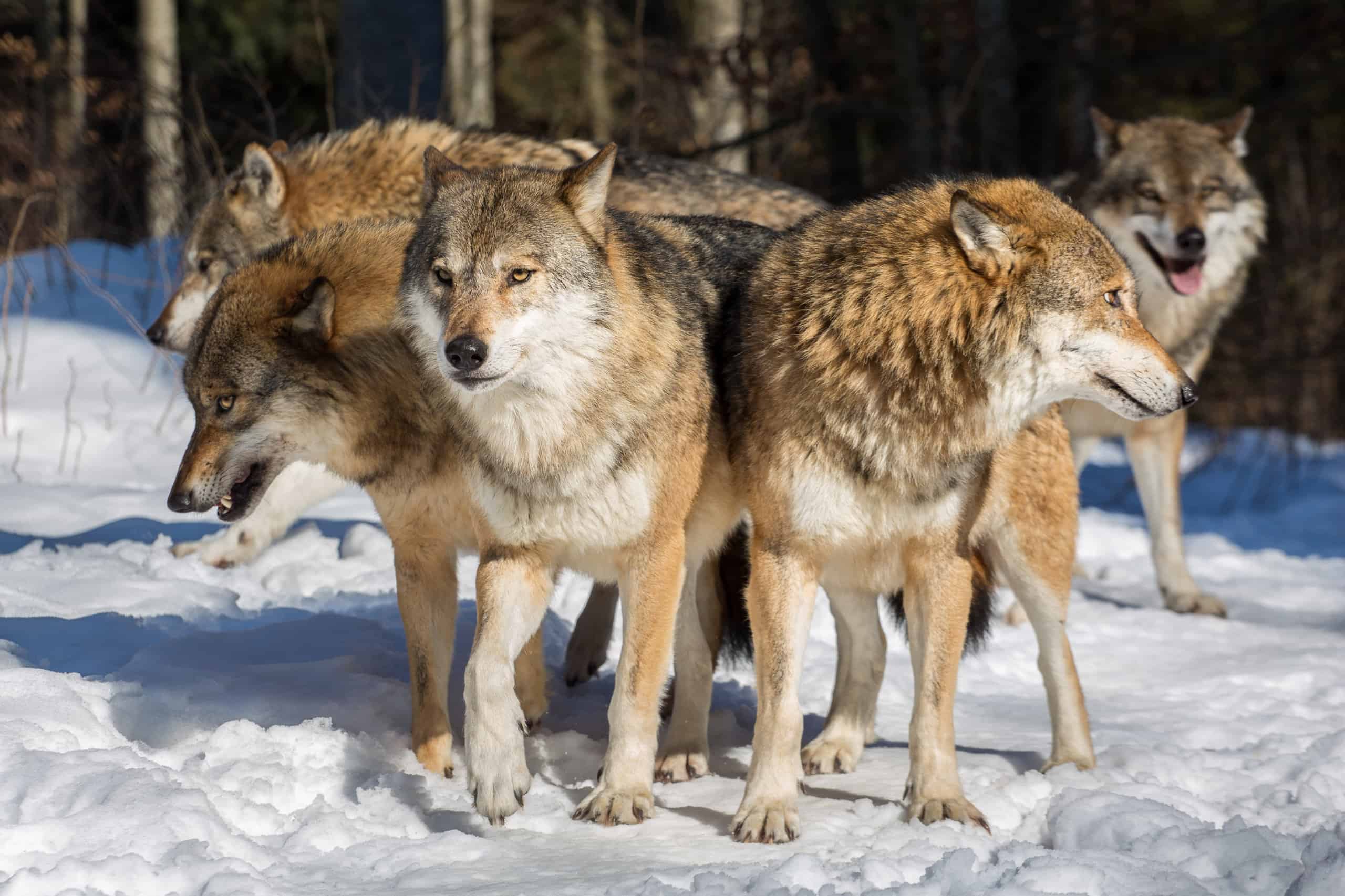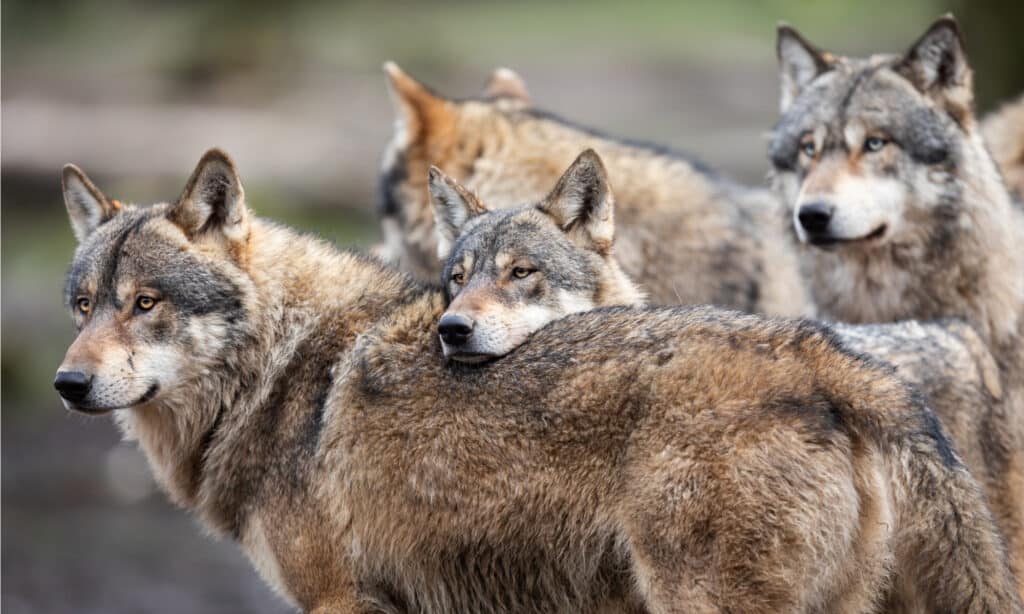Continue reading for our analysis...

This is a very brief snapshot of how wolves hunt in the wild and illustrates how effective pack cooperation is as a hunting method. It is highly unlikely that a lone wolf would take on a leopard, yet as a pack, they seem to be getting the upper hand.
The footage is taken from some distance away and as all the animals are moving very fast and dodging in different directions and as they are a similar color, it can be hard to tell the wolves from the leopard. The best approach is to try and focus on the animal with the long tail – that is the leopard!
Wolves’ Habitat and Diet
There are over thirty different subspecies of wolves and they are found across the northern hemisphere in tundras, forests, mountains, and plains. They weigh, on average, between 80 and 160 pounds and stand up to three feet high. Wolves are carnivores and need between five and seven pounds of meat a day to thrive so hunting is a constant activity for them.
Because they are social animals, they hunt and live in packs that are made up of between four and eight adults but some much larger packs have been recorded. They will eat just about anything that they can catch but their most frequent prey are large hoofed mammals which mean deer, elk, moose, sheep, and goats. However, they will also eat rabbits.

Wolves can spot a sick or weak animal as potential prey
©AB Photographie/Shutterstock.com
Wolves Hunting as a Pack
Wolves are opportunistic hunters and hunt very differently from the ambush predator species. They do not lie in wait and then pounce – instead, they carry out surveillance on potential prey, spotting if it is weak or vulnerable using sight, hearing, and scent. When a wolf pack hunts it is all about teamwork and endurance. Each wolf will have a specific role that they are awarded according to their place in the social hierarchy of the pack.
At the same time, these highly intelligent animals are assessing the terrain and weather and judging how that will influence the outcome. So, if they are on open terrain, they know that many animals can outrun them. However, on rocky slopes like the one in this video, they may have an advantage over some animals. Perhaps this pack has detected a weakness in this leopard?
Perhaps it is sick, old or injured? Packs can follow potential targets for days and are constantly gathering information. We don’t get to see how this particular battle ends.
Thank you for reading! Have some feedback for us? Contact the AZ Animals editorial team.






